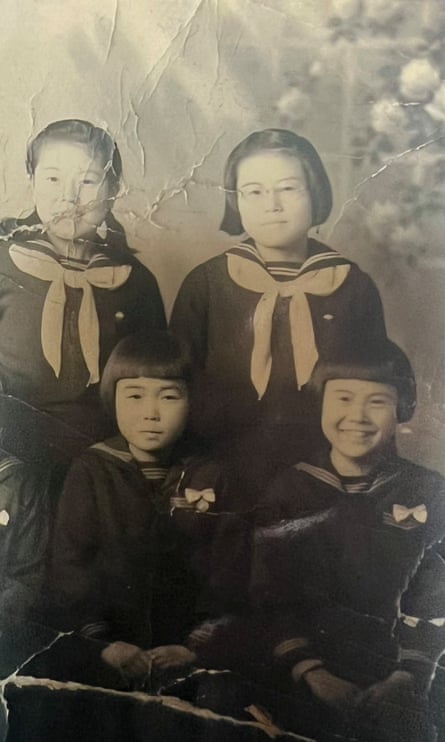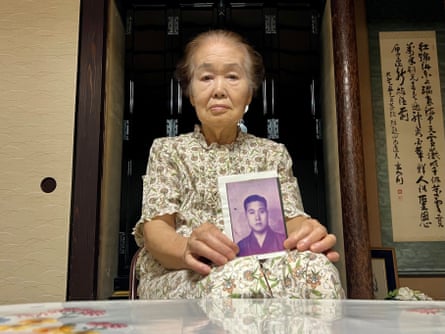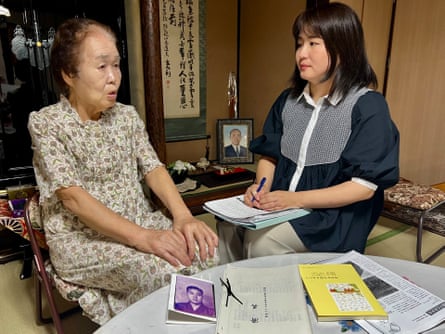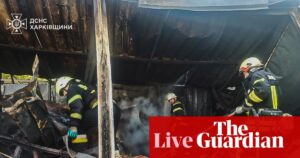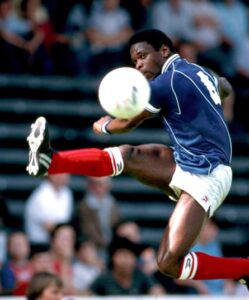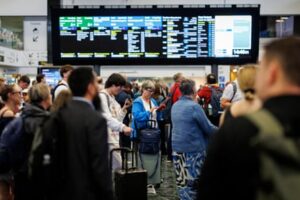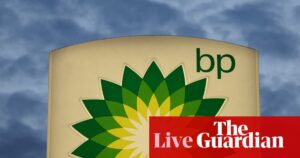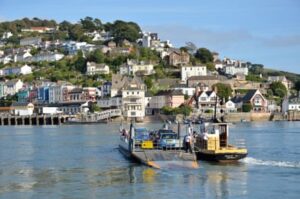The fires were still burning, and the dead lay where they had fallen, when a 10-year-old Yoshiko Niiyama entered Hiroshima, two days after it was destroyed by an American atomic bomb.
“I remember that the air was filled with smoke and there were bodies everywhere … and it was so hot,” Niiyama says in an interview at her home in the Hiroshima suburbs. “The faces of the survivors were so badly disfigured that I didn’t want to look at them. But I had to.”
Niiyama and her eldest sister had rushed to the city to search for their father, Mitsugi, who worked in a bank located just 1km from the hypocentre. They had been evacuated to a neighbourhood just outside the city, but knew something dreadful had happened in Hiroshima when they saw trucks passing their temporary home carrying badly burned victims.
As Hiroshima prepares to mark 80 years since the city was destroyed in the world’s first nuclear attack, the 90-year-old is one of a small number of hibakusha – survivors of the atomic bombings – still able to recall the horrors they witnessed after their home was reduced to rubble in an instant.
At 8:15am on 6 August, the Enola Gay, a US B-29 bomber, dropped a nuclear bomb on the city. “Little Boy” detonated about 600 metres from the ground, with a force equivalent to 15,000 tonnes of TNT. Between 60,000 and 80,000 people were killed instantly, with the death toll rising to 140,000 by the end of the year as victims succumbed to burns and illnesses caused by acute exposure to radiation.
Three days later, the Americans dropped a plutonium bomb on Nagasaki, killing 74,000. And on 15 August, a demoralised Japan surrendered, bringing an end to the second world war.
Niiyama, one of four sisters, never found her father or his remains, which were likely incinerated along with those of his colleagues. “My father was tall, so for a long time whenever I saw a tall man from behind, I would run up to him thinking it might be him,” she says. “But it never was.”
With the number of people who survived the bombing and witnessed its immediate aftermath dwindling by the year, it is being left to younger people to continue to communicate the horrors inflicted on Hiroshima and Nagasaki.
For decades Niiyama, who is a registered hibakusha, said nothing of the trauma she had suffered as a schoolgirl, not even to members of her own family. “I didn’t want to remember what had happened,” she says. “And many hibakusha stayed quiet as they knew they might face discrimination, like not being able to marry or find a job. There were rumours that children born to hibakusha would be deformed.”
It was only when her granddaughter, Kyoko Niiyama, then a high school student, asked her about her wartime experiences that Niiyama broke her silence.
“When my children are older, they’ll naturally ask about what happened to their grandmother,” says the younger Niiyama, 35, a reporter for a local newspaper and the mother of two young children. “It would be such a shame if I wasn’t able to tell them … that’s why I decided to ask my grandmother about the bomb.”
She is one of a growing number of people in Hiroshima and Nagasaki studying to become “family successors” – a local government initiative that certifies the descendants of first-generation hibakusha to record and pass on the experiences of the only people on earth to have lived through nuclear warfare.
“Now that the anniversary is approaching, I can talk to her again,” Kyoko says. “This is a really precious time for our family.”
‘I don’t want to think about that day’
Last year, survivors of the Hiroshima and Nagasaki attacks won recognition for their campaign to rid the world of nuclear weapons when Nihon Hidankyo – a nationwide network of hibakusha – was awarded the Nobel peace prize.
But survivors face a race against time to ensure that their message lives on in a world that is edging closer to a new age of nuclear brinkmanship.
The world’s nine nuclear states are spending billions of dollars on modernising, and in some cases expanding, their arsenals. The Russian president, Vladimir Putin, has refused to rule out the use of tactical nuclear weapons in his war against Ukraine, and last week a veiled nuclear threat by the country’s former leader, Dmitry Medvedev, prompted Donald Trump – who had earlier compared US strikes on Iran’s nuclear facilities to the Hiroshima and Nagasaki attacks – to claim that he had moved two nuclear submarines closer to the region. North Korea’s development of nuclear weapons continues unchecked.
“The hibakusha have spent their lifetimes courageously telling their stories again and again, essentially reliving their childhood traumas – to make sure the world learns the reality of what nuclear weapons actually do to people and why they must be abolished, so that no one else goes through what they have suffered,” says Melissa Parke, executive director of the International Campaign to Abolish Nuclear Weapons.
“These brave hibakusha deserve to have their decades of campaigning vindicated and to witness the elimination of nuclear weapons in their lifetimes. This would provide some nuclear justice.”
The number of registered survivors of both attacks fell to just below 100,000 this year, according to the health ministry, compared with more than 372,000 in 1981. Their average age is 86. Just one of the 78 people confirmed to have been within 500 metres of the hypocentre of the blast in Hiroshima is still alive – an 89-year-old man.
On the eve of the anniversary, the ministry said it would no longer conduct a survey every 10 years to assess the living conditions and health of hibakusha, saying it wanted to “lessen the burden” on ageing survivors.
Niiyama, who struggles to walk, will watch Wednesday’s ceremony at home and pause to remember her father, whose memory is represented by a teacup he used that was retrieved from the devastation.
“I don’t like the month of August,” she says. “I have nightmares around the anniversary. I don’t want to think about that day, but I can’t forget it. But I’m glad I still remember that I’m a hibakusha.”

